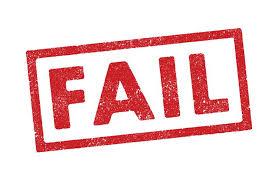 One of the critical documents used in the business sale process is the Confidential Information Memorandum or “CIM.” Other names for this document are pitchbook, deal book, offering memorandum and confidential business review. A CIM tells the target company’s story and lays out important facts and figures for prospective buyers. This article answers common questions about CIM’s and explains how they improve sale process outcomes.
One of the critical documents used in the business sale process is the Confidential Information Memorandum or “CIM.” Other names for this document are pitchbook, deal book, offering memorandum and confidential business review. A CIM tells the target company’s story and lays out important facts and figures for prospective buyers. This article answers common questions about CIM’s and explains how they improve sale process outcomes.
Who receives the CIM and when?
Buyers receive a CIM after signing a non-disclosure agreement (NDA) and after passing the M&A advisor’s screening process. One of the CIM’s main purposes is to help buyers make informed, confident and swift investment decisions. Not having a CIM is a big time waster for sellers and buyers.
Who prepares the CIM?
The CIM is prepared by an M&A advisor based on interviews with and documents obtained from the seller client. They also rely on their industry knowledge and research. Finalizing a CIM can take a few weeks after all the facts are gathered, but it makes the rest of the sale process go faster, with fewer headaches and missteps. Remember, the goal is not to be for sale; but to sell and maximize value in a sale.
In parallel with putting a CIM together, we M&A advisors prepare a target buyer list, build-out a data room for due diligence, and coach our clients through final business preparation.
What information goes into a CIM?
A CIM discusses a company’s products and services; history; customer base; end markets; operations; technologies, systems, processes and capabilities; management and personnel; facilities and fixed assets; key contracts and certifications; IP and intangible assets; strategic relationships; growth plans; and more. It presents and analyzes several years of financial statements with normalization adjustments, and often includes financial projections. It may discuss the competitive landscape and industry trends if targeting financial buyers such as private equity groups.
Every CIM is a custom document that tells our client’s unique story to potential buyers. Stories should have numbers attached to them, and every number should tell a story. CIMs can be 20 to 60 pages in length, plus exhibits, depending on the complexity of the business.
When writing the CIM, we often exclude highly sensitive information such as customer names. A CIM can present detailed analysis of the customer base without naming names. Some things should wait for due diligence or even closing.
Ten CIM Benefits to Sellers
A professional CIM improves business sale outcomes in several ways:
- Set correct expectations. The CIM sets a professional tone for future discussions, builds credibility, and let’s buyers know you’re serious about maximizing value.
- Confidence in your message. Because you help shape the story and approve the CIM. You will understand exactly how your company will be represented by your M&A advisor.
- More buyer interest. More buyers will explore a deal that has quality information.
- Consistent messaging. When expecting to have multiple bids to choose from, it is important that all buyers are working with the same information.
- Higher perceived value. A consistent story with convincing data leads to better offers. Conversely, uncertainty produces low offers.
- Persuade stakeholders. Buyers use the CIM to educate their investors, partners, lenders, CFO, attorney, CPA, and other advisors and stakeholders.
- Speed of process. Having reviewed a quality CIM, buyers can move quickly to the offer (IOI or LOI) stage, or move on, which is in everyone’s best interest.
- Time savings. A CIM helps you spend time with the right buyers, and meetings with buyer candidates will be fewer and more productive.
- Less renegotiation. A quality CIM results in fewer surprises during due diligence, less renegotiating and fewer blown deals
- Secure your proceeds. A CIM often makes important disclosures, early on. Important facts are less likely to be missed.
If you are considering selling your company, I urge you to hire an M&A firm that will invest the time to analyze and present your company in the professional manner it deserves. M&A advisors or business brokers who rush to market and skip or skimp on the CIM disappoint most of their clients. The CIM is an essential document in a successful business sale process.
For further information on the benefits of a Confidential Information Memorandum or to discuss a potential business sale, acquisition or valuation need or referral, contact Al Statz at 707-781-8580 or alstatz@exitstrategiesgroup.com.

 One of the critical documents used in the business sale process is the Confidential Information Memorandum or “CIM.” Other names for this document are pitchbook, deal book, offering memorandum and confidential business review. A CIM tells the target company’s story and lays out important facts and figures for prospective buyers. This article answers common questions about CIM’s and explains how they improve sale process outcomes.
One of the critical documents used in the business sale process is the Confidential Information Memorandum or “CIM.” Other names for this document are pitchbook, deal book, offering memorandum and confidential business review. A CIM tells the target company’s story and lays out important facts and figures for prospective buyers. This article answers common questions about CIM’s and explains how they improve sale process outcomes. Research indicates that most business owners have 60-80% of their wealth tied up in their businesses. Yet in our experience few owners have a clear idea about the value of their business and few have done much thinking or strategizing about how to
Research indicates that most business owners have 60-80% of their wealth tied up in their businesses. Yet in our experience few owners have a clear idea about the value of their business and few have done much thinking or strategizing about how to  Companies that make multiple acquisitions are much more likely to have successful merger and acquisition (M&A) transactions than companies that have made one or less acquisitions in the past five years, according to a recent Boston Consulting Group (BCG) article. In fact, over 50 percent of all M&A transactions result in negative shareholder returns.
Companies that make multiple acquisitions are much more likely to have successful merger and acquisition (M&A) transactions than companies that have made one or less acquisitions in the past five years, according to a recent Boston Consulting Group (BCG) article. In fact, over 50 percent of all M&A transactions result in negative shareholder returns. A critical component in any business transaction, whether it be a simple sale of a used car or a complex transfer of ownership of a business, is usually PRICE. The art of “the deal” is dependent upon the two parties arriving at a price they can both live with. In both cases, each party must persuasively defend their price.
A critical component in any business transaction, whether it be a simple sale of a used car or a complex transfer of ownership of a business, is usually PRICE. The art of “the deal” is dependent upon the two parties arriving at a price they can both live with. In both cases, each party must persuasively defend their price. The Wall Street Journal published an article this month titled “The Missing Boom in Small-Business Sales — An expected rush in sales of small firms by the baby boomer generation has yet to materialize.”
The Wall Street Journal published an article this month titled “The Missing Boom in Small-Business Sales — An expected rush in sales of small firms by the baby boomer generation has yet to materialize.”

